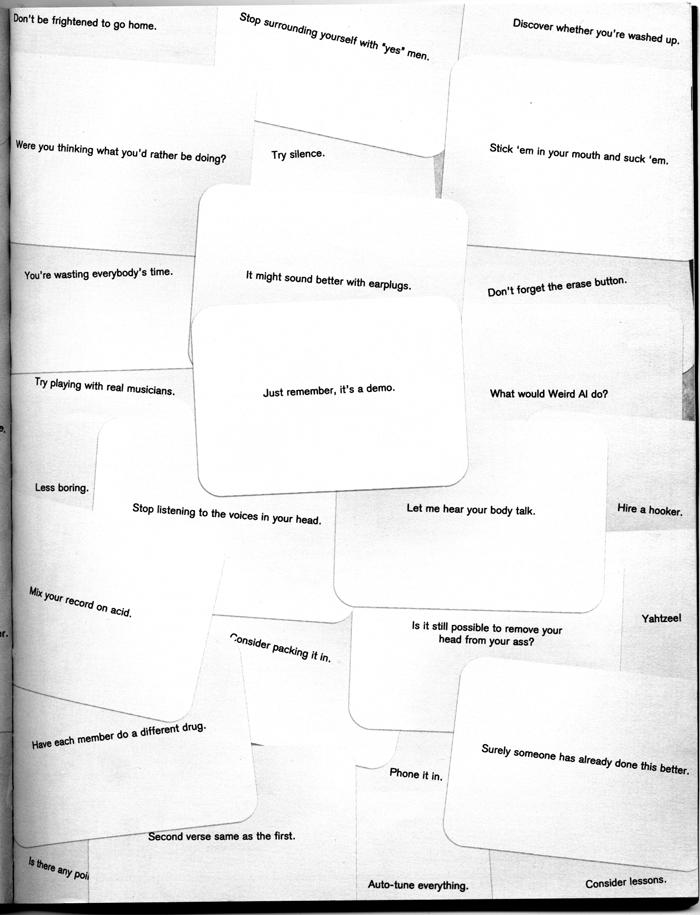


Relying on improvisation and collaboration, Eno has produced critically revered albums by the Talking Heads, David Bowie, and U2. Eno’s first rule was “Honour thy error as a hidden intention.” Others included “Use non-musicians” and “Tape your mouth.” In “Brian Eno: Visual Music,” a monograph of his musical projects and visual art, Eno, who still uses the rules, says, “ ‘Oblique Strategies’ evolved from me being in a number of working situations when the panic of the situation-particularly in studios-tended to make me quickly forget that there were other ways of working and that there were tangential ways of attacking problems that were in many senses more interesting than the direct head-on approach.” They were black on one side with an aphorism or an instruction printed on the reverse. The first edition consisted of a hundred and fifteen cards.
BRIAN ENO OBLIQUE STRATEGIES ARCHITECTURE HOW TO
In January, 1975, the musician Brian Eno and the painter Peter Schmidt released a set of flash cards they called “Oblique Strategies.” Friends since meeting at art school, in the late sixties, they had long shared guidelines that could pry apart an intellectual logjam, providing options when they couldn’t figure out how to move forward.


 0 kommentar(er)
0 kommentar(er)
